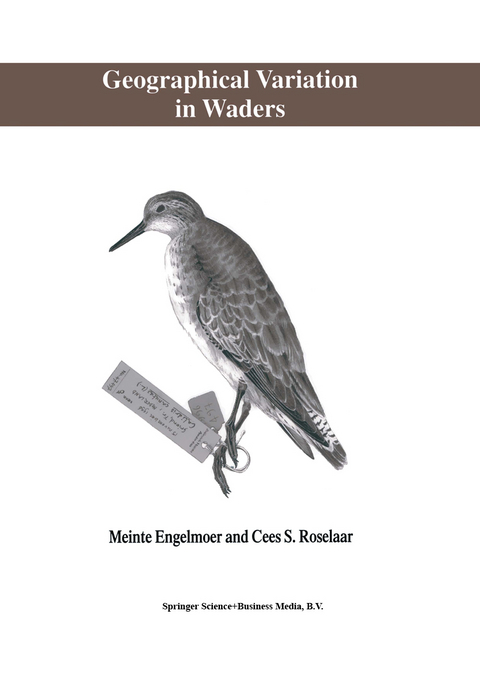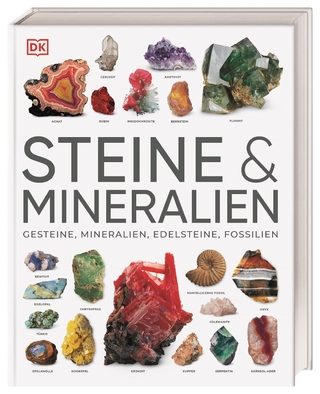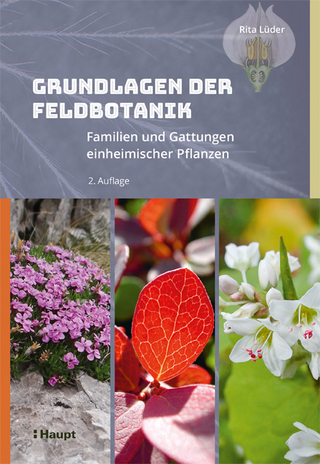
Geographical Variation in Waders
Springer (Verlag)
978-94-010-6105-6 (ISBN)
1 Introduction.- Skin collections.- The phylogeography of waders.- Geographical variation, glaciations, and interstadials.- The inheritance of morphometric characters.- Geographical variation and taxonomy.- Phylogenetics.- 2 Material and methods.- The selected species.- Selecting breeding birds.- The measured variables.- Reliability and reproducibility of measurements.- Statistical analysis of the data.- The distinction of breeding populations.- Construction of a typology.- The difference between ‘types’ and breeding populations.- Predicting geographical breeding origins.- The accuracy of predictions.- The exclusivity of predictions.- Variable selection for future use.- 3 introduction to the species’ accounts.- General information.- The breeding range.- Geographical variation.- Wing structure.- 4 Ringed Plover — Charadrius hiaticula and Semipalmated Plover — Charadrius semipalmatus.- Morphometrical differentiation.- Prediction of breeding origin.- Contact zones.- Body mass.- Primary moult.- Discussion.- Summary.- 5 Eurasian Golden Plover — Pluvialis apricaria.- Morphometrical differentiation.- Prediction of breeding origin.- Body mass.- Primary moult.- Discussion.- Summary.- 6 Grey Plover — Pluvialis squatarola.- Morphometrical differentiation.- Prediction of breeding origin.- Contact zones.- Body mass.- Primary moult.- Discussion.- Summary.- 7 Red Knot — Calidris canutus.- Morphometrical differentiation.- Prediction of breeding origin.- Contact zones.- Body mass.- Primary moult.- Discussion.- Summary.- 8 Sanderling — Calidris alba.- Morphometrical differentiation.- Prediction of breeding origin.- Contact zones.- Body mass.- Primary moult.- Discussion.- Summary.- 9 Curlew Sandpiper — Calidris ferruginea.- Morphometrical differentiation.- Body mass.-Primary moult.- Discussion.- Summary.- 10 Purple Sandpiper — Calidris maritima.- Morphometrical differentiation.- Prediction of breeding origin.- Body mass.- Primary moult.- Discussion.- Summary.- 11 Dunlin — Calidris alpina.- Morphometrical differentiation.- Prediction of breeding origin.- Contact zones.- Body mass.- Primary moult.- Discussion.- Summary.- 12 Black-tailed Godwit — Limosa limosa.- Morphometrical differentiation.- Prediction of breeding origin.- Discussion.- Summary.- 13 Bar-tailed Godwit — Limosa lapponica.- Morphometrical differentiation.- Prediction of breeding origin.- Body mass.- Primary moult.- Discussion.- Summary.- 14 Whimbrel — Numenius phaeopus.- Morphometrical differentiation.- Prediction of breeding origin.- Body mass.- Primary moult.- Discussion.- Summary.- 15 Eurasian Curlew — Numenius arquata.- Morphometrical differentiation.- Prediction of breeding origin.- Contact zones.- Body mass.- Primary moult.- Discussion.- Summary.- 16 Redshank — Tringa totanus.- Morphometrical differentiation.- Prediction of breeding origin.- Contact zones.- Body mass.- Primary moult.- Discussion.- Summary.- 17 Ruddy Turnstone — Arenaria interpres.- Morphometrical differentiation.- Prediction of breeding origin.- Body mass.- Primary moult.- Discussion.- Summary.- 18 General discussion.- Variation among and within species.- Have long-distance migrants short and small wings?.- Morphometrics in relation to sexual size dimorphism.- Skewed sex-ratios on the breeding grounds.- Estimating the composition of wader populations.- Morphometrics and DNA-studies.- Geographical isolation in low arctic Canada.- Curlew species in Kazakhstan and S Russia.- Which measurements ought to be included in morphometric studies?.- 19 References.- Annex 1. Summary ofmorphometric data.- Annex 2. Lengths of primaries in relation to maximum wing lengths.- Annex 3. POSCON and the prediction of a bird’s breeding origin or sex.- I — The POSCON user manual.- II — the samples of breeding populations of waders.
| Zusatzinfo | XI, 331 p. |
|---|---|
| Verlagsort | Dordrecht |
| Sprache | englisch |
| Maße | 210 x 297 mm |
| Themenwelt | Sachbuch/Ratgeber ► Natur / Technik ► Natur / Ökologie |
| Mathematik / Informatik ► Mathematik | |
| Naturwissenschaften ► Biologie ► Evolution | |
| Naturwissenschaften ► Biologie ► Ökologie / Naturschutz | |
| Naturwissenschaften ► Biologie ► Zoologie | |
| Weitere Fachgebiete ► Land- / Forstwirtschaft / Fischerei | |
| ISBN-10 | 94-010-6105-X / 940106105X |
| ISBN-13 | 978-94-010-6105-6 / 9789401061056 |
| Zustand | Neuware |
| Haben Sie eine Frage zum Produkt? |
aus dem Bereich


